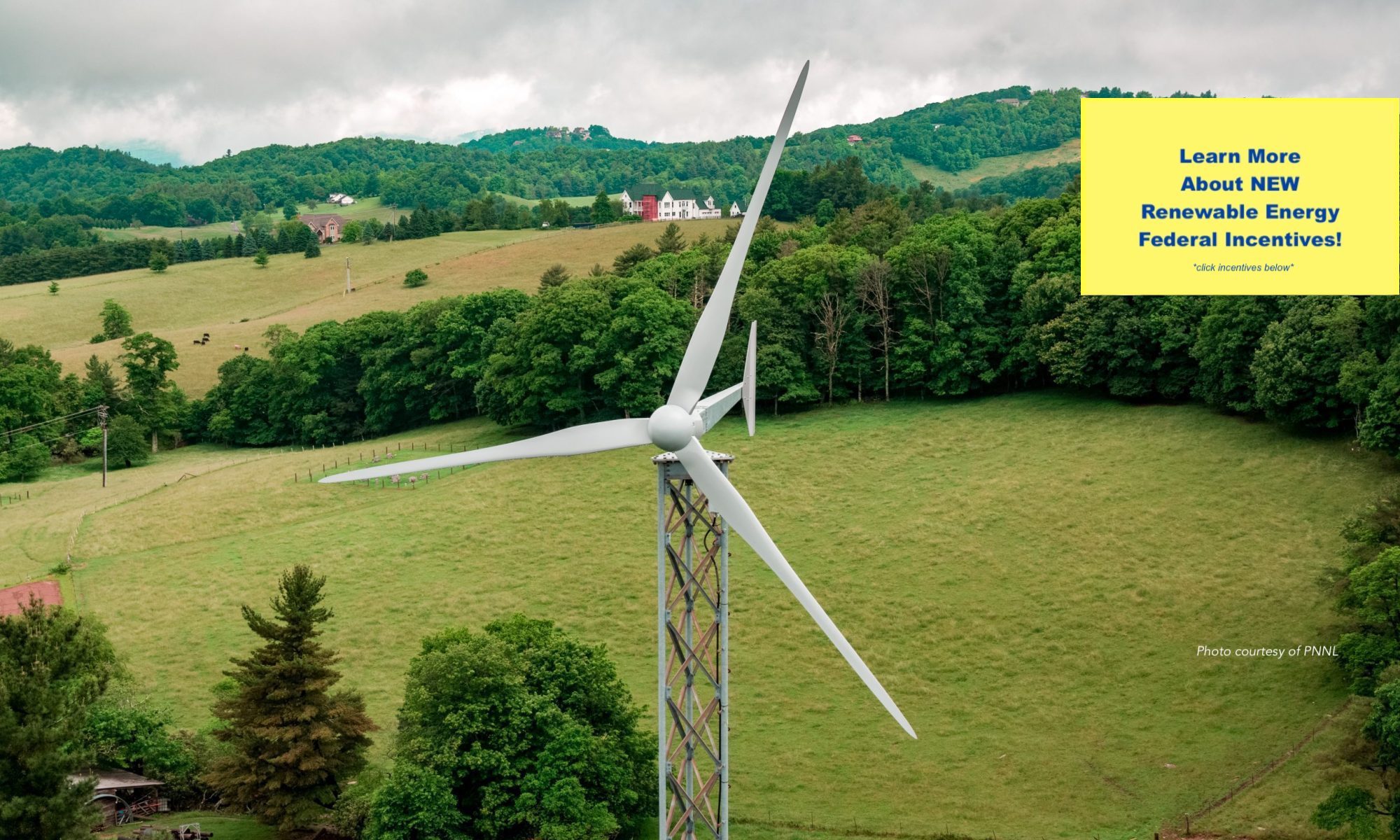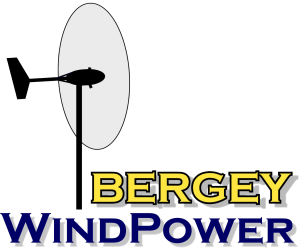Small Wind Turbines for Homes & Businesses
Updated June 2019
How do they work?
The wind turbine, which is installed on top of a tall tower, collects wind energy and converts it into electricity. The turbine output is then made electrically compatible with the utility and the output is fed into the household wiring at the breaker panel.
The home is served simultaneously by the wind turbine and the utility. If the wind speed is below about 7 mph there will be no output from the wind turbine and all the needed energy is bought from the utility. As the wind speed increases the turbine output begins and increases and the amount of energy purchased from the utility is proportionately decreased. When the turbine output is more than the house needs, the excess electricity is sold to the utility. All of this is done automatically. There are no batteries in a standard residential wind system.
The wind turbine typically lowers your utility bill by 50-100%. It is not uncommon for homeowners with total electric homes and Bergey turbines to have monthly utility bills of $15-$20 for most of the year. In northern parts of the country, where less air conditioning is used, the bills can be very low year round.
What size would I need for my home?
Homes typically use 1,000-2,000 kilowatt-hours of electricity per month. Depending upon the average wind speed in the area this will require a wind turbine rated in the range 5-15 kilowatts. Our 10 kW unit, the BWC EXCEL 10, is the best-selling residential unit in the U.S. It has a rotor diameter of 23 feet and is typically installed on 80 or 100 foot towers. In 2019, we introduced a new 15 kW turbine with advanced features and an energy production capacity over double that of our 10 kW. If you have at least a moderately good wind resource, the new Excel 15 can provide all the energy needed for a total electric home (and allowing you to replace fuel oil or propane heating) and an electric car.
Who should consider buying one?
A wind turbine is a relatively large device and it is not suitable for urban or small-lot suburban homes. We recommend a property size of two acres or more unless your closest neighbors are supportive. The economics of a wind system are determined by the average wind speed in the area, the availability of rebates or tax credits, and the cost of electricity. As a general rule-of-thumb, we recommend that you have at least a 10 mph average wind speed and be paying 12¢/kilowatt-hour or more for electricity. We have wind resource maps for the entire U.S. and we can provide you with information on your wind resource and performance projections. Residential wind turbines have been installed in all 50 states.
Will it help the environment if I install a wind turbine at my home?
Wind turbines produce no pollution and by using wind power you will be offsetting pollution that would have been generated by your utility company. Over its nominal 30 year life a BWC EXCEL 10 or Excel 15 will offset approximately 1.2 – 3 tons of air pollutants and 200 – 500 tons of greenhouse gases.
Don’t I have to take wind measurements for a year or more?
No. For residential systems the cost of taking wind measurements is not justified in most situations. Wind resource data published by the U.S. Dept. of Energy, 2Tier and AWS Scientific is sufficient to predict performance. In very hilly or mountainous areas, however, it may be prudent to take wind data before purchasing a system to ensure that your site in not in a sheltered area.
Are wind turbines reliable, and what about maintenance?
Bergey Windpower sells more residential systems than anyone else because our turbines have proven to be the most reliable on the market. Our turbines have only 2 – 4 moving parts and do not require any regular maintenance. After a 66 month test of one of our 10 kW units, Wisconsin Power & Light concluded that, “The turbines’ reliability could not be improved upon.” Our turbines are designed to last 30-50 years or more and they operate completely automatically.
Do they make noise or interfere with TV reception?
Small wind turbines do make some noise, but not enough to be found objectionable by most people. They do not interfere with TV reception.
Will the utility company allow me to hook-up a wind generator?
Federal regulations (PURPA) require utilities to allow you to install a wind generator and to pay you for any excess power you produce. Bergey Windpower and its dealers can assist you in arranging the required utility company approvals.
Will I have to change any of the wiring in my house?
No, a wind turbine is easily retrofitted to virtually any home without need of changing any wiring or appliances. In some states a second utility meter will be added, however, so that the utility can know how much electricity you have sold to them.
What about towers?
Usually a tower of between 80-140 feet is supplied along with the wind turbine. Towers this tall are needed to get above the turbulence generated by obstacles and trees on the ground. Also, wind velocity, and, therefore, wind turbine performance, increases as you get higher off the ground. For most situations an 80 or 100 foot tower is sufficient. The most economical type of tower is the guyed lattice type, but many customers prefer the slightly more costly self-supporting lattice tower due to its smaller footprint.
How much do they cost?
A Bergey residential wind turbine costs approximately $65,000 – 95,000 to install. The large range in costs is due to different types and heights of towers and variations in the amount of construction work required. Your Bergey dealer can do a site survey and provide you with a firm quotation. Small wind turbine qualify for federal tax credits and state rebates, where available. For businesses there are also substantial depreciation benefits. These incentives can greatly reduce your costs and payback period.
How are they as an investment?
That depends on your cost of electricity and average wind speed. The wind system will usually recoup its investment through utility savings within 5 – 10 years and after that the electricity it produces will be virtually free. Compared to purchasing utility power, a wind system can be a good investment because your money goes to increasing the value of your home rather than just paying for a service. Many people buy wind systems for their retirement because they are concerned about utility rate increases.
How would I proceed to have a wind turbine installed at my home?
We highly recommend that you work with an authorized Bergey dealer for a complete turnkey installation.
How can I get more information?
We would be happy to send you further information on our small wind turbines or answer any of your questions. Just call, e-mail or write to Bergey Windpower Co. at the address below. We also recommend the web site of the Distributed Wind Energy Association: www.distributedwind.org For information on subsidies and regulations for your state we suggest: www.dsireusa.org
For a detailed reference book on small wind we recommend Paul Gipe’s 2016 book “Wind Power for the Rest of Us: A Comprehensive Guide to Wind Power and How to Use It”. This $65.00, 576-page paperback book (or $20 electronic version) can be purchased from www.amazon.com.
Call us at 1-405-364-4212 or e-mail us at sales@bergey.com if you have additional questions…or write us at: Bergey Windpower Co., 2200 Industrial Blvd., Norman, OK 73069.

